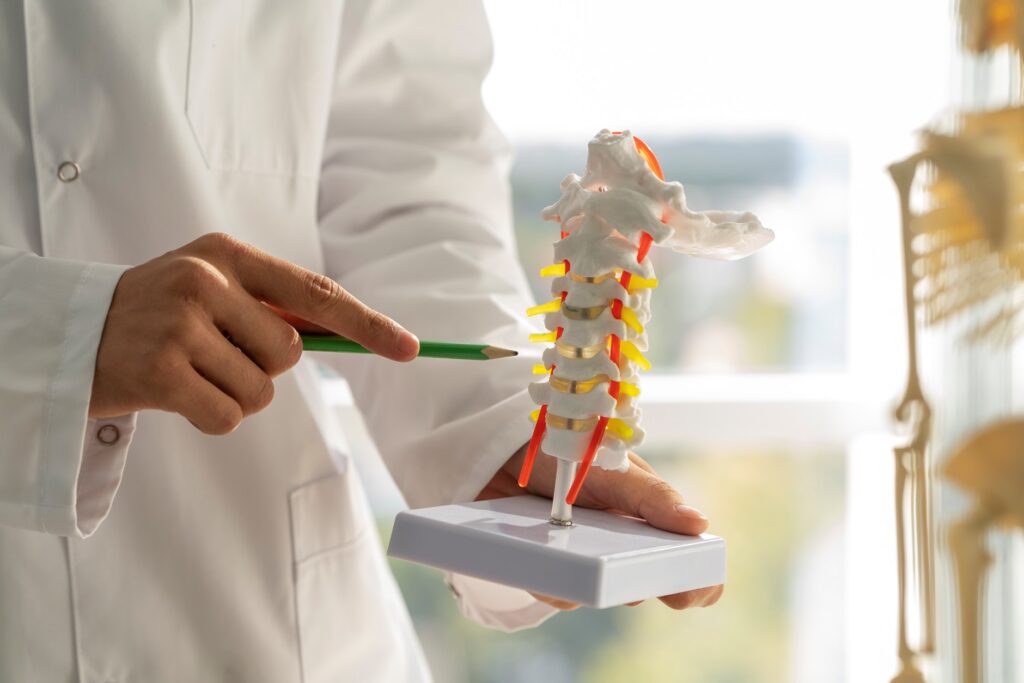What is Sciatica?
Sciatica is a common condition that causes pain along the sciatic nerve. This nerve runs from your lower back down each leg. Often, people feel sciatica pain in the lower back, buttocks, and legs. For many, the pain can be mild. However, it can also be sharp or severe. Sciatica is not a disease, but a symptom of another problem, such as a slipped disc. According to the CDC, sciatica affects millions of people each year. Because it can disrupt daily life, understanding sciatica is important for pain relief and better health.
Common Symptoms of Sciatica
People with sciatica often notice pain that starts in the lower back and travels down one leg. However, symptoms can vary. For example, some people feel only mild discomfort, while others have sharp, burning pain. In addition, you may notice:
Pain that gets worse when sitting or standing for long periods
Numbness or tingling in the leg or foot
Weakness in the affected leg
Difficulty moving the leg or foot
Pain that feels like an electric shock
Sometimes, symptoms appear suddenly. On the other hand, they may develop slowly over time. If you notice these signs, it is important to pay attention and seek help if needed.
Causes and Risk Factors
Sciatica happens when something presses on or irritates the sciatic nerve. Most often, a herniated disc is the cause. However, other conditions can also lead to sciatica. These include:
Spinal stenosis (narrowing of the spine)
Bone spurs on the spine
Injury to the lower back or spine
Muscle spasms in the back or buttocks
Several risk factors can make sciatica more likely. For instance, age-related changes in the spine increase risk. In addition, being overweight, sitting for long periods, or having a job that requires heavy lifting can raise your chances. According to the WHO, regular exercise and good posture may help lower your risk.
Diagnosis Methods
Doctors use several methods to diagnose sciatica. First, they ask about your symptoms and medical history. Next, they perform a physical exam. During the exam, your doctor may check your muscle strength and reflexes. In some cases, imaging tests are needed. These tests can include:
X-rays to look for bone problems
MRI scans to see soft tissues and nerves
CT scans for detailed images of the spine
With these tools, doctors can find the cause of your sciatica and suggest the best treatment.
Treatment Options
Treating sciatica depends on the cause and how severe your symptoms are. Many people get better with simple steps. However, some may need more advanced care. Here are common treatment options:
Medical Treatments
Pain relievers like acetaminophen or ibuprofen
Muscle relaxants to ease spasms
Prescription medications for severe pain
Steroid injections to reduce swelling
Non-Surgical and Lifestyle Approaches
Physical therapy to strengthen back and leg muscles
Gentle stretching and regular exercise
Applying heat or cold packs to the painful area
Maintaining good posture while sitting or standing
Weight management to reduce pressure on the spine
In rare cases, surgery may be needed if other treatments do not help. For example, surgery may be an option if you have severe pain, weakness, or loss of bladder control. Always talk to your doctor about the best way to treat sciatica pain.
Prevention Tips
While not all cases can be prevented, you can lower your risk of sciatica. Try these tips:
Exercise regularly to keep your back strong
Use proper lifting techniques
Maintain a healthy weight
Take breaks from sitting for long periods
Practice good posture at work and home
By following these steps, you can help protect your back and reduce your chances of sciatica.
When to See a Doctor
Most cases of sciatica improve with self-care. However, you should see a doctor if:
Pain lasts longer than a week
Symptoms get worse over time
You have trouble controlling your bladder or bowels
You feel severe weakness or numbness in your leg
Early treatment can prevent further problems. Therefore, do not wait if your symptoms are severe or do not improve.
For personalized advice on sciatica, consult a pain management specialist. They can help you find the best path to pain relief and recovery.




